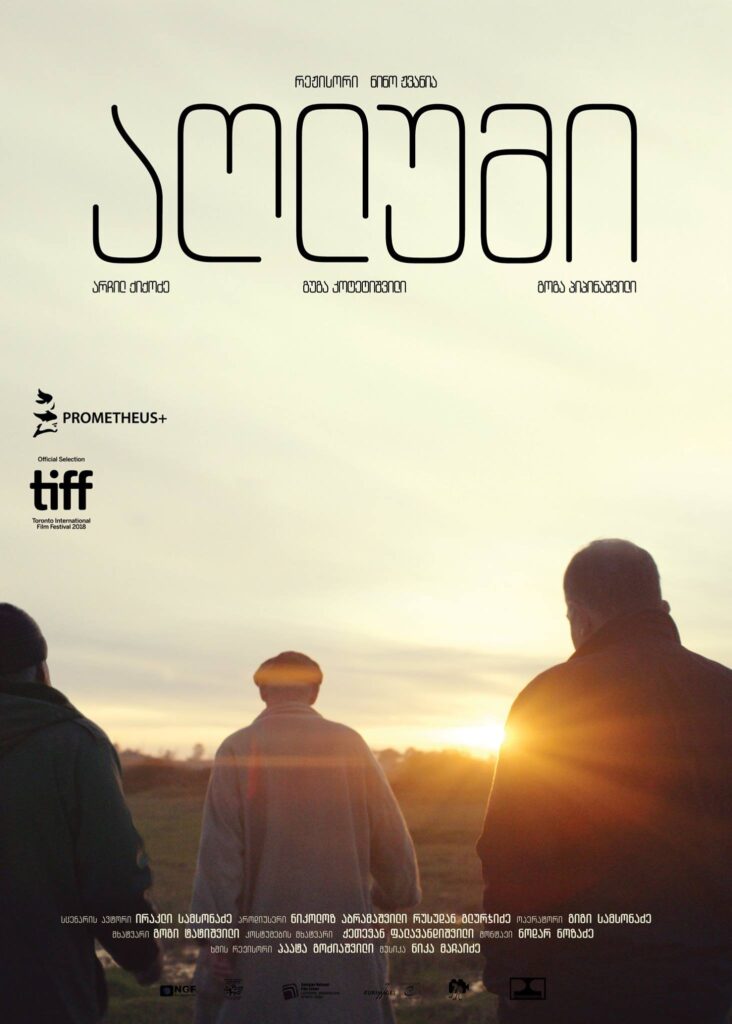In the daily routine, people lose important values, opportunities to communicate with loved ones. It seems to suppress feelings and emotions, it does not allow us to think about how much time we waste on futile actions and acquiring material values. Only the feeling of approaching the end of life makes you look at the world anew and see how important the spiritual freedom of a person is.
Nino Zhvania's debut film, "Parade" (2018) tells the story of a short, day trip into the past and present, where each character's individual nature and lifestyle, outlook and worldview are broken down step by step. Friends who have not seen each other for a long time: Archil, Goga and Guga meet each other in the vicinity of "Dry Bridge." The heroes with three different characters and lifestyles are united by childhood and memories of the past. What has life turned them into?
The routine, everyday life, loaded with material and existential problems, the long and tiring waiting for "clients" prepares Archil (Archil Kikodze) for philosophical thoughts and thinking aloud about life problems. Goga (Goga Pipinashvili) is different from him - a defender of others’ dignity, a tough talker, gifted with traditional "old guy" qualities, matured earlier than others, a bearer of inner "strength" and "tragedy." Archil is the narrator, and Goga is the listener. Their idyllic existence is disturbed by Guga (Guga Kotetishvili) - free, chaotic, delightful. A person with problems and without problems, the initiator of this meeting. It is Guga who tries to turn the trip into one big adventure and involve his friends in this game.
The plot of the film is simple. Extensive dialogues provide an opportunity to generalize, to expand the problem, not to lock it in a specific space and time. In the word game, with the characters’ intonation, different accents and subtexts appear, as well as a light irony and a criticism of the society, which expresses not only the characters’ position but also the author's attitude to stereotypes and clichés, snobbish attitudes prevailing in the society. Attitude towards the way of thinking with which certain types of people are able to easily adapt to the environment. The dramaturgical basis of the film, which actually follows a traditional scheme, allows the director to understand verbal and non-verbal languages, words and images in one harmonious system.
The journey is divided into main episodes: the fight scene, where the audience is introduced to Guga's lifestyle; the scene of the restaurant, where the world view of the characters, their present and past open; a meeting with prostitutes, where in a foreign and temporary shelter, each of them gives themselves the right to be free, to talk, to play, to forget about everyday life; the bus scene where, in the elderly’s environment, Guga realizes that with age, life has become one big memory. Meeting with the elderly intensifies Guga’s feeling of illness and approaching death. It is for him that it becomes unbearable and impossible to stay in this space. When watching the film, this episode seems incomprehensible, even superfluous but the finale makes this scene an important part in the context of the overall fabric. And the final scene - the parade. Just as the characters play with their own reality throughout the film, the director also chooses the principle of "play" during the narration and creates the effect of surprise in the finale.
In the process of narration, the director constantly avoids explaining why old friends gather to spend this one day. There is a feeling that Guga is running away from his debts, aggravated conflict, situations and is trying to find a way out of this closed circle, but no. In the final scene, we realize that Guga wants the last days of his life to be pleasant for him. Just for a second, to get back those feelings, emotions, moods of his youth, which united these people in his best years. A small parade, a solemn procession of people reminds us by association of the shots from Federico Fellini's films. Guga and his friends try to be a part of this common celebration, but in vain. Guga hides in the stable from this common excitement, from chaotic, noisy environment and dies there, while his friends join the festive march with childish joy, as if, unlike Guga, they continue to live their usual lives.
Expanded horizons, a flock of sheep scattered on the mountainside, vast landscapes illuminated by red spots of the setting sun, the darkened interior of an abandoned building, sometimes a "flat" space on which characters appear "silhouetted" and rhythmically move forward to discover an as yet unknown reality, make the image picturesque and, to some extent, it reminds us of the style characteristic of the image of Asian cinema. However, here we are reminded of Alejandro González Iñárritu's style of storytelling and visual construction: with wide realistic-mystical horizons, pictorial landscapes, mosaic of the story, with chaos and fragmentation of the narrative.
Maya Levanidze






